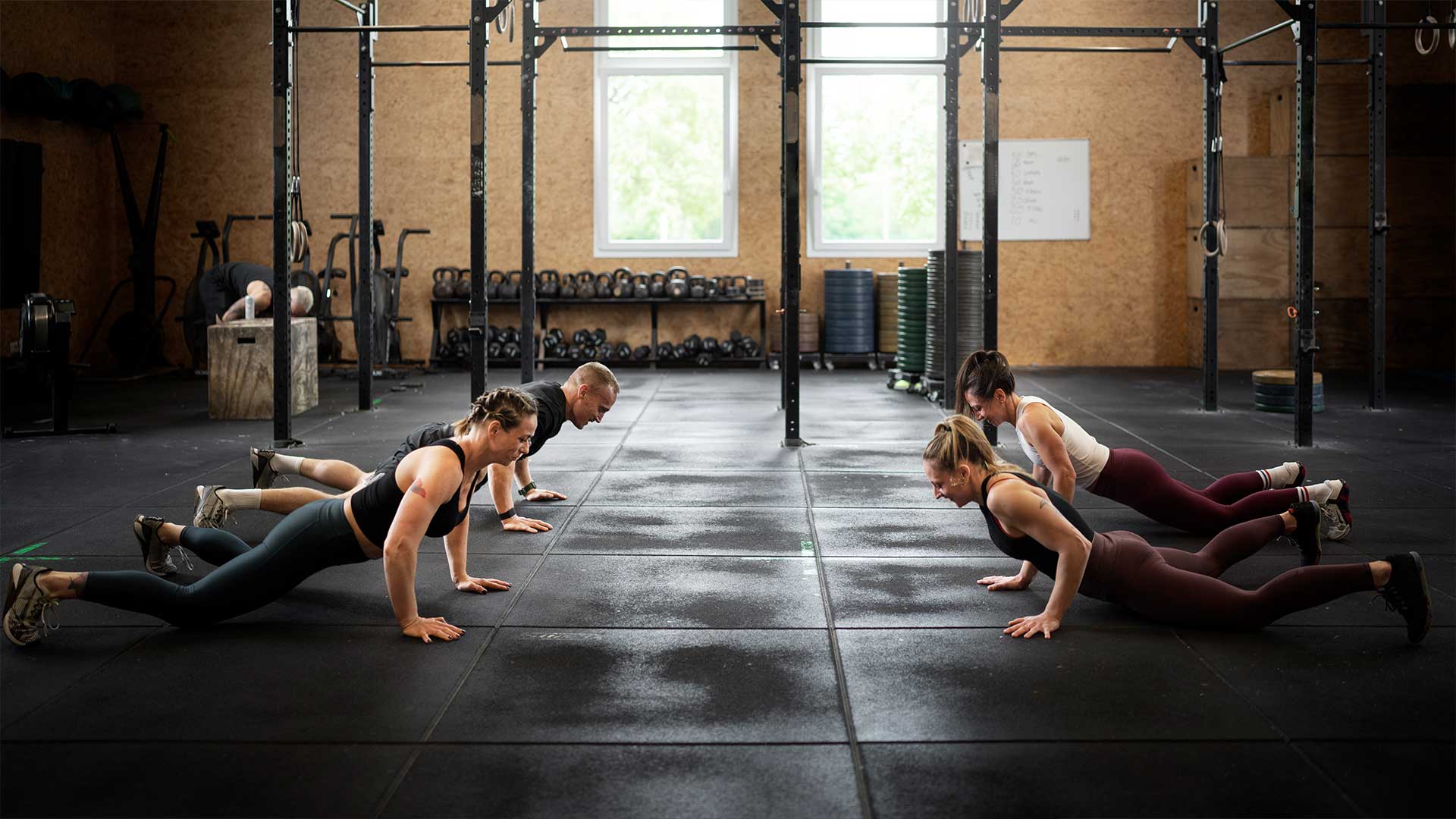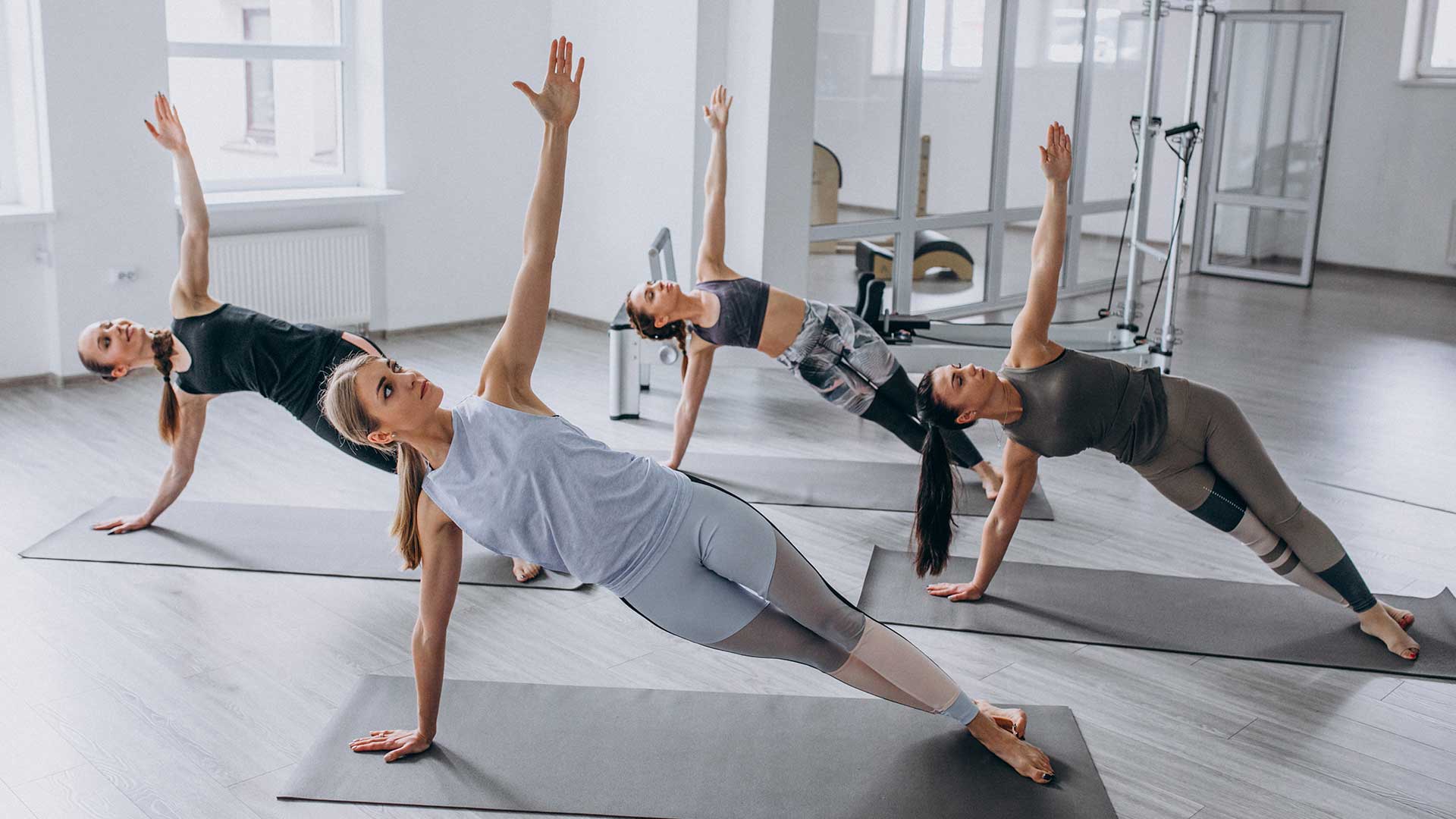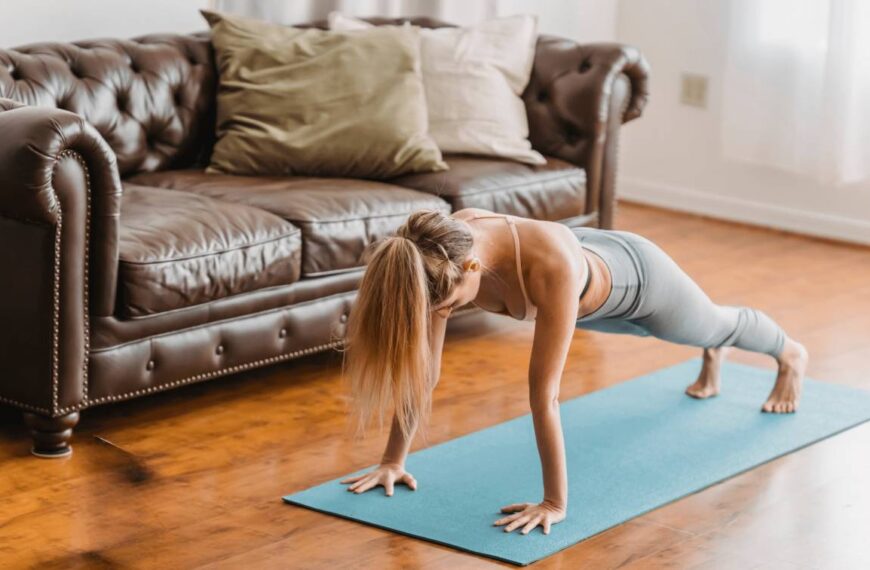Benefits of Yoga for Beginners
Yoga is a form of exercise that is gentle on the body, yet provides numerous physical and mental benefits. It’s an excellent way for beginners to improve their overall health and well-being. Here are some of the benefits of yoga for beginners:
1. Mental Benefits
Yoga is known for its calming and stress-reducing effects. It can help beginners to slow down their thoughts and focus on their breathing, which can have a positive impact on their mental health. Other mental benefits of yoga for beginners include:
- Reducing stress levels: According to Yoga Basics, it can help to reduce cortisol levels in the body, which is a hormone that is released in response to stress.
- Improving mental clarity: Practicing yoga regularly can help to improve focus and concentration, which can improve mental clarity and productivity.
- Boosting mood: Yoga can help to release endorphins in the body, which are feel-good hormones that can improve mood.
2. Physical Benefits
Yoga for Beginners is a low-impact exercise that can help beginners to improve their physical health without putting undue stress on their joints. Some of the physical benefits of yoga for beginners include:
- Increasing flexibility: Yoga poses are designed to stretch the muscles and improve flexibility over time.
- Improving balance: Many yoga poses require balance, which can help beginners to improve their overall balance and coordination.
- Enhancing strength: Yoga poses can also help to build strength in the muscles, particularly in the core and upper body.
3. Health Benefits
In addition to the mental and physical benefits of yoga, there are also several health benefits. According to Good Housekeeping, some of the health benefits of yoga for beginners include:
- Reducing chronic pain: Yoga for Beginners can help to reduce chronic pain, particularly back pain.
- Lowering blood pressure: Studies have shown that practicing yoga can help to lower blood pressure in people with hypertension.
- Preventing heart disease: Yoga for Beginners can help to improve cardiovascular health, which can reduce the risk of heart disease.
Tips for Starting a Yoga Practice
Starting a Yoga for Beginners practice can be intimidating for beginners, but it doesn’t have to be. Here are some tips for starting a yoga practice:
1. Starting with Gentle Poses
It’s important for beginners to start with gentle poses that are not too challenging. According to Insider. Starting with gentle poses can help beginners to build confidence and improve their flexibility over time.
2. Finding the Right Teacher or Class
Finding the right teacher or class can make all the difference for beginners. According to Yoga Basics, beginners should look for classes that are specifically designed for beginners or gentle yoga classes. It’s also important to find a teacher who is knowledgeable and experienced in working with beginners.
3. Creating a Regular Practice Schedule
Consistency is key when it comes to practicing yoga. Beginners should aim to practice yoga at least 2-3 times a week to see the most benefits. According to Good Housekeeping, practicing yoga in the morning can help to set a positive tone for the day.
4. Incorporating Mindfulness and Meditation
Yoga is not just about the physical poses it’s also about mindfulness and meditation. According to Yoga Basics, beginners should focus on their breath during their practice and try to be present in the moment. Incorporating mindfulness and meditation can help beginners to reduce stress and improve their mental well-being.
By following these tips, beginners can start a yoga practice that is both enjoyable and beneficial for their overall health and well-being.
Yoga with Merlin
In the fast-paced world we live in, maintaining a healthy mind and body is more important than ever. Whether you’re a seasoned yogi or just beginning your journey, the “Yoga with Merlin” app is here to revolutionize your yoga practice.
With a unique blend of cutting-edge technology and ancient wisdom, this app is designed to elevate your Yoga for Beginners sessions like never before. Let’s explore the exceptional features that set “Yoga with Merlin” apart:
1. AI Real-Time Feedback: Elevating Your Practice
Imagine having a personal yoga instructor right in your pocket. With our AI Real-Time Feedback feature, that’s exactly what you’ll get.
As you flow through poses, our advanced AI technology will analyze your movements and provide instant feedback on your alignment and technique.
2. Customize Workouts: Your Yoga, Your Way
We understand that every yogi is unique. That’s why “Yoga with Merlin” enables you with customizable workouts according to your preferences and goals.
Whether you’re looking for a quick morning stretch or a deep relaxation session before bed, you can tailor your Yoga for Beginners practice to suit your needs.
3. Track Progress: Celebrate Your Journey
Progress is the heartbeat of any Yoga for Beginners journey. With our intuitive progress tracking feature, you can visualize your growth and celebrate your achievements.
Keep tabs on your practice frequency, session durations, and even improvements in flexibility and strength. As you witness your progress over time, you’ll find the motivation to stay dedicated and inspired on your path to wellness.
4. Voice Feedback: Guiding You Every Step of the Way
For those who thrive on auditory guidance, our Voice Feedback feature is a game-changer. Throughout your Yoga for Beginners session, let the soothing voice of our virtual instructor guide you through each pose and transition.
Clear and concise verbal cues ensure that you maintain proper form and experience a seamless flow from one pose to the next. It’s like having a personal yoga guru guiding you through your practice.
5. Multilingual Support: Yoga for Everyone
Yoga for Beginners is a universal practice that transcends language barriers. That’s why “Yoga with Merlin” is proud to offer multilingual support.
Our app provides instructions, descriptions, and interface options in a variety of languages, making yoga accessible to individuals from all corners of the world.
Now, more people can experience the transformative power of yoga in a language they understand best.
Yoga Poses for Beginners
Yoga for Beginners poses, also known as asanas, are a key component of any yoga practice. Here are some easy yoga poses for beginners:
1. Easy Seat (Sukhasana)
Easy seat, also known as Sukhasana, is a simple seated pose that is a great place to start for beginners. To practice easy seat:
- Sit cross-legged on the floor or a yoga mat.
- Rest your hands on your knees or in your lap.
- Close your eyes and focus on your breath.
2. Child’s Pose (Balasana)
Child’s pose, also known as Balasana, is a gentle resting pose that can help to stretch the back and hips. To practice child’s pose:
- Start on your hands and knees.
- Lower your hips back towards your heels.
- Rest your forehead on the floor and stretch your arms out in front of you.
3. Tree Pose (Vrksasana)
Tree pose, also known as Vrksasana, is a standing pose that can help to improve balance and strengthen the legs. To practice tree pose:
- Stand with your feet hip-width apart.
- Shift your weight onto your left foot and lift your right foot off the ground.
- Place the sole of your right foot on the inside of your left thigh.
- Bring your hands to your heart center and focus on your breath.
4. Downward Dog (Adho Mukha Svanasana)
Downward dog, also known as Adho Mukha Svanasana, is a common yoga pose that can help to stretch the hamstrings and calves. To practice downward dog:
- Start on your hands and knees.
- Lift your hips up towards the ceiling.
- Straighten your arms and legs as much as possible.
- Press your hands and feet into the ground and focus on your breath.
5. Warrior Two (Virabhadrasana II)
Warrior two, also known as Virabhadrasana II, is a standing pose that can help to improve strength and balance. To practice warrior two:
- Start in a wide-legged stance with your feet turned out.
- Extend your arms out to the sides and bend your left knee.
- Look out over your left hand and focus on your breath.
- Repeat on the other side.
By practicing these beginner yoga poses, beginners can start to build their strength, flexibility, and balance over time.
Yoga Gear for Beginners
While Yoga for Beginners does not require a lot of gear, there are a few basic items that beginners may want to invest in to make their practice more comfortable and enjoyable.
1. Yoga Mat
A yoga mat is an essential piece of gear for any yoga practice. It provides a non-slip surface for yoga poses and can also help to cushion the joints during floor poses. According to Yoga Basics, beginners should look for a mat that is thick enough to provide cushioning, but not so thick that it interferes with balance.
2. Yoga Blocks
Yoga blocks are foam or cork blocks that can help to provide support and stability during yoga poses. They can be used to modify poses or to help beginners who are not yet flexible enough to reach the ground. According to Good Housekeeping, beginners should look for blocks that are lightweight and easy to grip.
3. Yoga Strap
A yoga strap is a long, adjustable strap that can be used to help with flexibility and alignment during yoga poses. It can be particularly helpful for beginners who are not yet flexible enough to reach certain poses. According to Yoga Basics, beginners should look for a strap that is long enough to be versatile, but not too long that it becomes unwieldy.
4. Comfortable Clothing
Comfortable clothing is important for any yoga practice. Beginners should look for clothing that is lightweight, breathable, and allows for a full range of motion. According to The New York Times, clothing that is form-fitting can help to ensure that clothing does not get in the way during poses.
By investing in these basic pieces of yoga gear, beginners can make their practice more comfortable and enjoyable. However, it’s important to remember that yoga does not require a lot of gear just a willingness to show up and practice.
Common Mistakes to Avoid in Yoga
While yoga can be a great way to improve physical and mental well-being, there are some common mistakes that beginners should avoid to ensure a safe and effective practice.
1. Overdoing It
One common mistake that beginners make is overdoing it. According to Yoga Basics, beginners should start with a gentle practice and gradually build up to more challenging poses over time. Overdoing it can lead to injury or burnout.
2. Comparing Yourself to Others
Another common mistake that beginners make is comparing themselves to others. Yoga is a personal practice, and everyone’s body is different. According to Good Housekeeping, beginners should focus on their own progress and not worry about what others are doing.
3. Forgetting to Breathe
Breathing is a key component of any yoga practice. One common mistake that beginners make is forgetting to breathe. According to The New York Times, beginners should focus on their breath and use it to guide their movements.
4. Pushing Through Pain
Another common mistake that beginners make is pushing through pain. Yoga should not be painful, and beginners should listen to their bodies and avoid any poses that cause discomfort. According to Insider, beginners should modify poses as necessary and not push themselves too hard.
5. Skipping Savasana
Savasana, also known as corpse pose, is the final relaxation pose in yoga. One common mistake that beginners make is skipping savasana. According to Yoga Basics, savasana is an important part of any yoga practice, as it allows the body and mind to rest and integrate the benefits of the practice.
By avoiding these common mistakes, beginners can have a safe, effective, and enjoyable yoga practice.
Start Your Yoga Journey Today
Yoga can be a wonderful way to improve physical and mental well-being, reduce stress, and increase flexibility and strength. Whether you’re a seasoned yogi or a beginner, there are many resources available to help you on your yoga journey.
Questions & Answers
Q: Who can do yoga for beginners?
A: Anyone can do yoga, regardless of age, fitness level, or flexibility.
Q: What are the benefits of yoga for beginners?
A: Yoga can help reduce stress, improve flexibility, and increase strength and balance.
Q: How often should beginners practice yoga?
A: Beginners should aim to practice at least three times per week to see the most benefits.
Q: What if I’m not flexible enough for yoga?
A: Yoga is not about being flexible, it’s about finding your edge and working from there.
Q: How can I find a yoga class for beginners?
A: Look for classes labeled as “beginner” or “gentle” and read reviews from other students.
Q: What if I feel self-conscious in a yoga class?
A: Remember that everyone is there to practice and improve. Focus on your own practice and don’t worry about others.






